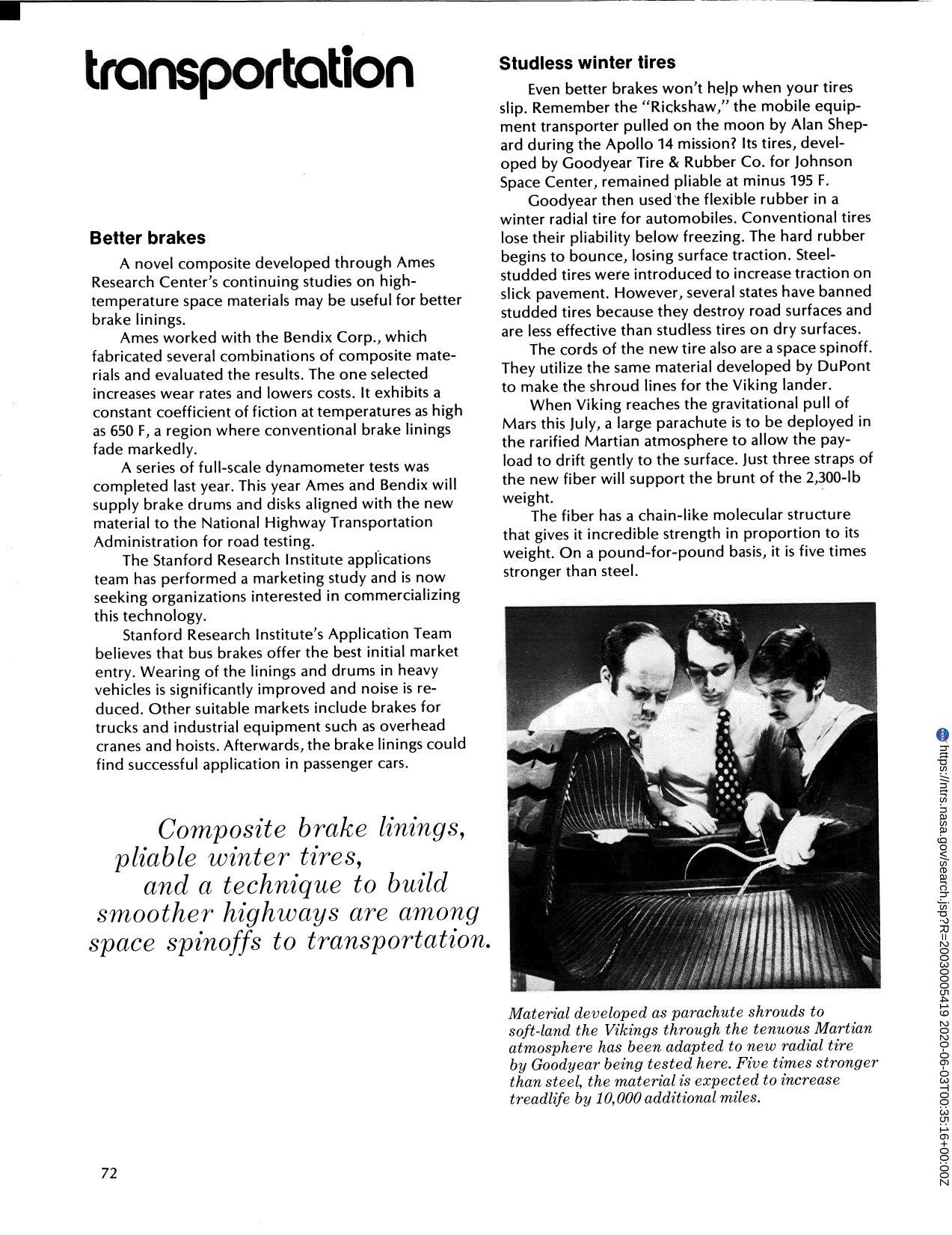
Better Brakes
Through continuing studies on high-temperature space materials useful for better brake linings, Bendix Corporation worked with Ames Research Center to develop a novel composite. This team worked to fabricate several combinations of composite materials and evaluated results. The one selected increases wear rates and lowers costs. It exhibits constant coefficient of friction at temperatures as high as 650 degrees Fahrenheit, a region where conventional brake linings fade markedly. Other suitable markets include brakes for trucks and industrial equipment such as overhead cranes and hoists. Afterwards brake linings could find successful application in passenger cars.
Full article: http://hdl.handle.net/hdl:2060/20030005419

Better Brakes

Better Brakes













